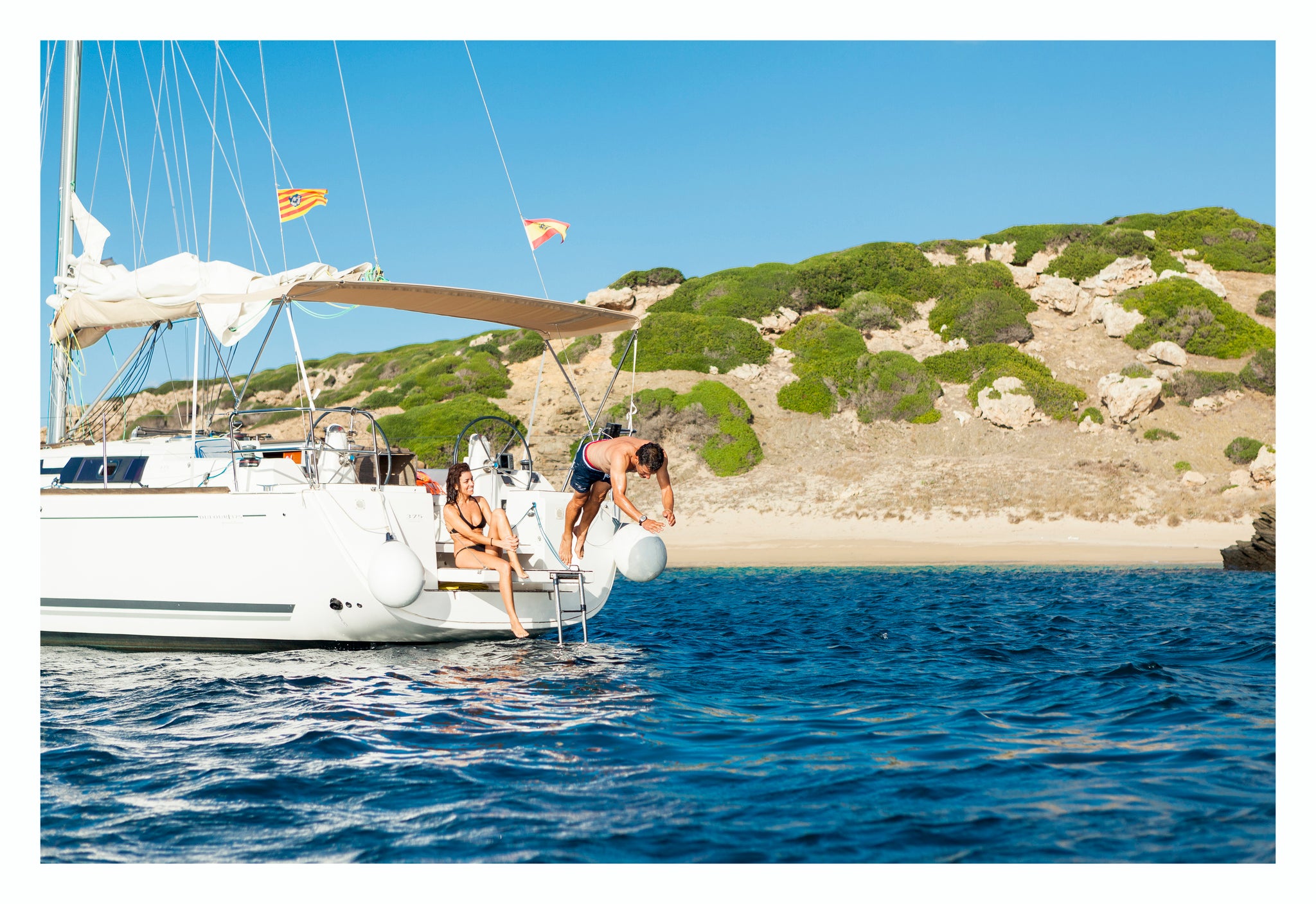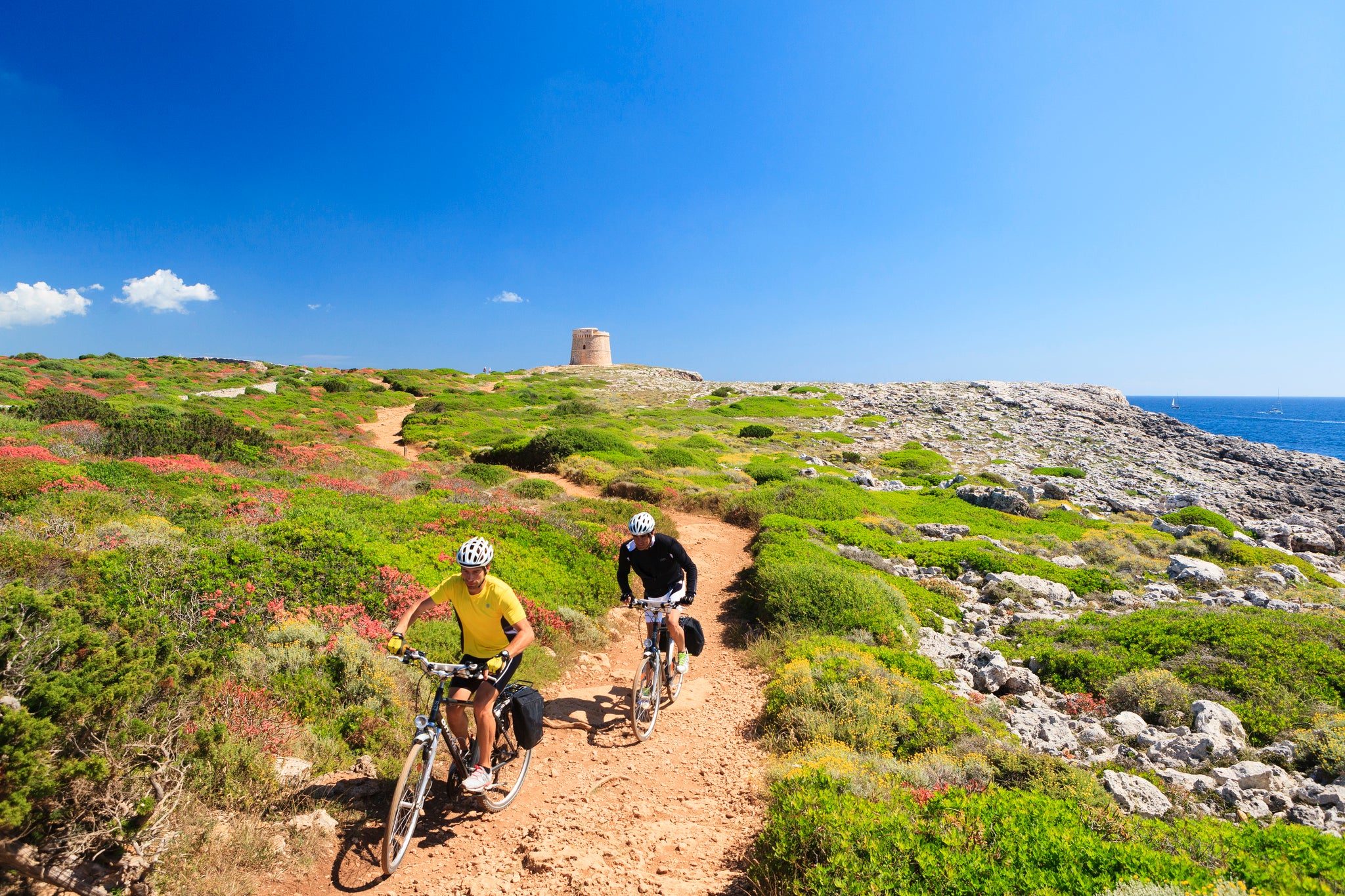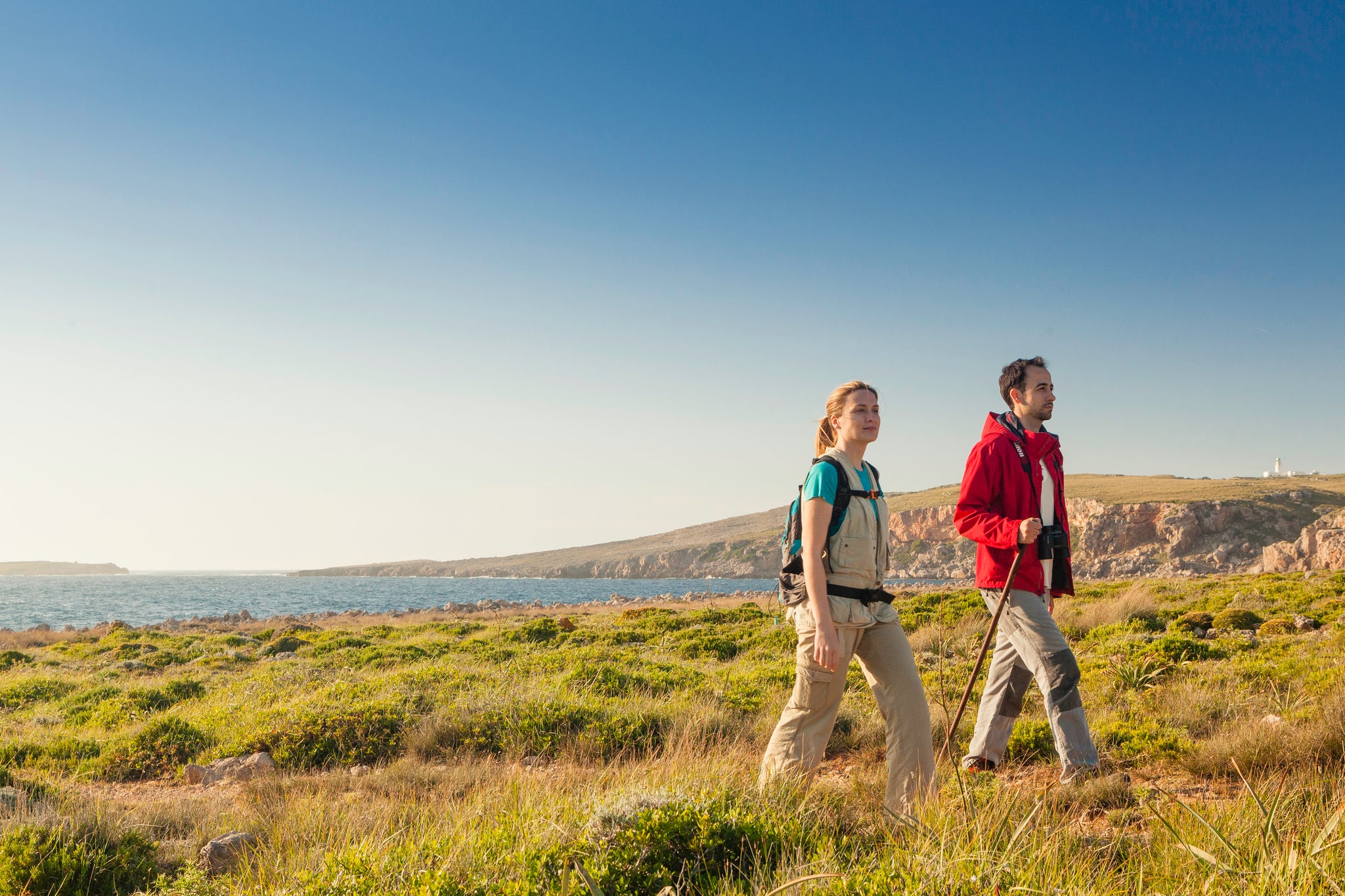Get active on Menorca
Discover the island’s rugged north and undulating south while hiking, cycling and horseriding – or have some adventures in the water, says Hugo Valentine

If you simply want to lie on a beach, soaking up the rays and going for the occasional cooling paddle, then Menorca (with its annual 300 days of sunshine) will leave you spoilt for choice. More and more visitors however now prefer to take an active – or at least partially active – holiday, in which case Menorca also caters more than handsomely. The island is a natural arena for walking, cycling, running and horse-riding, and much work has been done in recent years (especially with the now completed 185km perimeter path, Camí de Cavalls) to give these activities well-signposted and coherent routes.
Cycles can be hired in the main towns (and are cheaper away from the resorts), and Menorca’s 3,000 kilometres of paths, tracks and roads are all accessible on a mountain bike – although for riders who prefer Tarmac beneath their tyres, country roads see little traffic. A new cycling route through the centre of the island avoids the main roads but includes the larger towns of Alaior, Es Mercadal and Ferreries, passing along the quiet, bucolic Camí d’en Kane, built by Menorca’s first British governor, Richard Kane, to link Mahón and Ciutadella. That job is now done by the thunderous ME1, a highway best avoided by the two-wheeled.

The rugged north of the island tends to be more challenging than the undulating south, but for cyclists looking for some serious pedalling then the steep slopes of Monte Toro will really get their calf and thigh muscles rippling. The annual Tour of the Lighthouses Race each May is a 210km ride linked by the island’s main lighthouses (and concludes with a climb up Monte Toro), but throughout the year the Cycling Association runs the Menorca Challenge, a series of events for members and visiting cyclists.
Of course the Camí de Cavalls means ‘the way of the horse’, and the equine-minded can follow the path from various stables (Menorca Horse Riding near Mahón is a well-established outfit offering half-day excursions for about €60). The locals have a strong relationship with the sleek black horses known as Menorquinas – the mainstays of the summer fiestas – which are disciplined enough to be used in dressage events.
Son Martorellet, an old cattle farm near Ferreries converted to a breeding and training centre for Menorcan horses, puts on twice-weekly shows, while Saturday evening trotting races take place at the Aero Club Hippodrome on the main Mahón-Sant Lluis road.
Prefer two feet to four? Opportunities for walking and running abound: the extraordinary landscapes in the north-east of the island – around the Cap de Favaritx, with its at times almost lunar topography, and the Parc Natural de S’Albufera, with its birdlife and spring flowers – make for very rewarding places to exercise your legs. The competitive-minded can partake of events that range from festive fun-runs to half-marathons, with the Extreme Man triathlon in Fornells for the seriously tough. It’s enough to drive you back to the sun-lounger.

Leaving dry land now, for Menorca’s other great glory, its water. The opportunities to ‘muck about on boats’ range from skippered yachts to beach-hire pedalos, although perhaps the most rewarding is somewhere in between. Kayaks are inexpensive and versatile, allowing you to explore off-the-beaten track beaches as well as caves (the ‘route of the caves’ from Cala en Porter is a popular excursion by sea kayak).
I first learned to sail in the sheltered, calm and (most importantly) warm waters of Fornells – thankfully there instead of some chilly, grey reservoir in the UK, because I spent half my time in the sea. Windsurfers appreciate Fornells for the same reason, and the protected lagoon provides an ideal nursery environment for beginners. If all you want to do is learn how to sail, then the well-established and UK-based Minorca Sailing runs specially tailored holidays.
Having decided I was too large and cumbersome for dinghy sailing, I learned how to pilot a motor boat, and with an international licence to hand, these are readily available for hire. Novice sailors might like to rent one of Menorca’s traditional llauts – classic wooden, almost Biblical boats that are still used by fishermen who chug them gently around the island’s perimeter. They are easy to handle, but if you really don’t fancy skippering a boat yourself – and money or time is too tight to hire a crew – you can still admire Menorca from the sea (and learn something to boot) from one of the boat tours that regularly work out of Mahón, Es Castell and Ciutadella, complete with running commentary – while the glass-bottomed boat that circumnavigates Mahón Harbour allows you to spot the local marine life.
For more serious underwater exploration, there are a number of dive schools on the island – Menorca being considered the best of the Balearics for scuba-enthusiasts. The wreck of the French steamer Malakoff, which sank in 1929, is a popular destination, while the magnificent cave system at Pont d’En Gil is another. With its stalagmites, stalactites and cascades, it is considered a geological masterpiece. A bit like Menorca as a whole, in fact.
Join our commenting forum
Join thought-provoking conversations, follow other Independent readers and see their replies
Comments
Bookmark popover
Removed from bookmarks